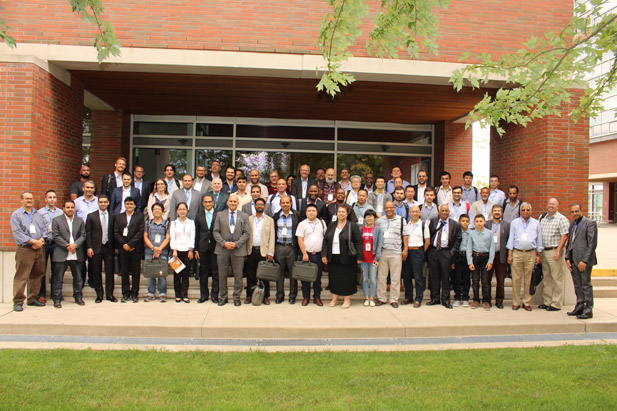Words to the wise on the potential of ‘smart’ energy grids
UOIT plays host to international energy research conference
September 1, 2016

Nearly a century after the advent of hydroelectricity along the Niagara River, and 45 years after the switch was flicked on at Ontario’s first nuclear generator at Pickering, utility operators and energy scholars believe there are still many ways to improve the efficiency of the electrical grid.
“Whether it is here in Ontario or in developing nations, access to reliable, affordable and clean power is a vital economic driver and barometer of quality of life,” says Hossam Gaber, PhD, Professor, University of Ontario Institute of Technology (UOIT), Faculty of Energy Systems and Nuclear Science (FESNS) (cross-appointed to the Faculty of Engineering and Applied Science (FEAS)). “There is work to be done on improving existing infrastructure and careful consideration needed when it comes to future investment. In a word, it’s all about finding ways to make our systems ‘smarter’.”
Part of the solution involves bringing together smart energy experts from around the world to share ideas about best practices.
In late August, the university hosted more than 80 scholars and speakers from 18 countries and leaders from the energy sector at the Institute of Electrical and Electronics Engineers (IEEE) International Conference on Smart Energy Grid Engineering (SEGE). The four-day event explored the latest research and technologies in:
- energy storage
- information and communications
- micro-energy grids
- safety and security
- transmission/distribution lines
- transportation electrification
“It’s terrific for our university to be an international focal point for these important discussions about the future,” says Dr. Gaber. “Hydro One supported SEGE by sponsoring the best (research) paper awards submitted by professors as well as students.” (see award information, below)
The ‘smarts’ on smart energy:
- Smart energy grids are modernized energy networks that use automated digital information and communications technology to control the production and distribution of electricity to maximize efficiency between utilities and interconnected energy grids.
- Systems are called ‘smart’ because the technology can constantly monitor the behaviour of electricity providers and consumers, and then act upon that information to enhance efficiency, security, reliability and safety with minimum environmental impacts.
- Smart energy grids have the capacity for bi-directional distribution and transmission, with applications for numerous energy utilities such as natural gas, thermal energy, hydroelectricity and nuclear energy.
Participants took some time during the conference to check out the university’s campus and facilities, showing strong interest in the university’s climatic wind tunnel facility during a tour of ACE. Many of the participants expect to be back for SEGE 2017, which will again be held at the university.



